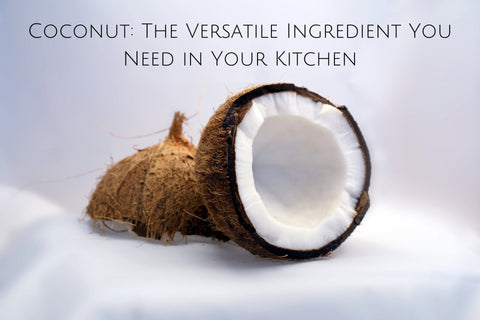Welcome to the wonderful world of herbs and spices! Whether you're a novice cook or a seasoned chef, mastering the art of using herbs and spices can truly elevate your cooking to new heights. These aromatic ingredients not only add depth and complexity to dishes but also provide numerous health benefits. In this guide, we'll explore how to effectively use herbs and spices to enhance the flavors of your meals and take your culinary skills to the next level.
Understanding Herbs and Spices:

Before delving into specific herbs and spices, it's essential to understand the distinction between the two. Herbs typically come from the green, leafy parts of plants and are often used fresh or dried. Examples include basil, parsley, cilantro, and mint. Spices, on the other hand, are derived from other parts of plants, such as seeds, bark, roots, or fruits, and are usually dried. Common spices include cinnamon, cumin, paprika, and ginger.
First things first, let's understand the difference between herbs and spices:
- Herbs: The leafy green parts of plants, usually used fresh or dried shortly after harvesting. They bring a bright, delicate flavor to dishes.
- Spices: Derived from various plant parts like seeds, bark, roots, and flowers. Typically dried and ground, they offer a more intense and complex flavor profile.
Fresh vs. Dried: Choosing Your Weapon
- Fresh Herbs: Burst with vibrant flavor and aroma, perfect for adding a finishing touch to salads, soups, and sauces.
- Dried Herbs and Spices: More shelf-stable and convenient, great for adding depth of flavor during cooking.
Enhancing Flavor Profiles:

Herbs and spices have the remarkable ability to transform ordinary dishes into extraordinary culinary creations. By carefully selecting and combining these ingredients, you can enhance the flavor profiles of your meals in countless ways. For example, pairing basil with tomatoes and mozzarella in a Caprese salad creates a refreshing and vibrant dish, while a pinch of cinnamon added to a savory stew adds warmth and complexity.
Experimentation is key when it comes to using herbs and spices in your cooking. Don't be afraid to get creative and try out new combinations to discover what works best for your palate. Additionally, consider the cultural and regional contexts of different herbs and spices. For instance, Indian cuisine is renowned for its use of spices like turmeric, coriander, and cardamom, while Mediterranean dishes often feature herbs such as oregano, thyme, and rosemary.
- Blooming: Heat whole spices in oil to release their aromatic oils for a more intense flavor.
- Grinding: Grind whole spices just before using to unleash the freshest flavor.
- Infusion: Steep dried herbs in oil or butter to create flavorful bases for dishes.
- Timing is Key: Add delicate fresh herbs towards the end of cooking to preserve their brightness. Heartier herbs can withstand longer cooking times.
Building Flavor Profiles: Exploring Spice Blends
Many cultures have signature spice blends that capture their unique flavors. Explore pre-made blends or create your own! Here are some ideas to get you started:
Garam Masala:

A warm, Indian blend featuring cumin, coriander, cardamom, and cloves.
Herbs de Provence:

A fragrant French blend with rosemary, thyme, savory, and marjoram.
Chinese Five Spice:

A complex blend with star anise, cinnamon, cloves, fennel seeds, and Szechuan peppercorns (beware, the spice!).
Experimentation is Key!
Don't be afraid to experiment! There are endless combinations of herbs and spices waiting to be discovered.
Tips for Using Herbs and Spices:

To maximize the flavor impact of herbs and spices in your cooking, keep the following tips in mind:
Use fresh herbs whenever possible, as they tend to have a more vibrant flavor than their dried counterparts. If using dried herbs, crush them between your fingers before adding them to your dish to release their essential oils.
Toasting spices before use can enhance their aroma and flavor. Simply heat them in a dry skillet over medium heat until fragrant, being careful not to burn them.
Balance is key when seasoning with herbs and spices. Start with a small amount and taste as you go, adjusting the seasoning as needed to achieve the desired flavor.
Store herbs and spices in a cool, dry place away from direct sunlight to maintain their freshness and potency. Consider investing in quality spice containers or jars to prolong their shelf life.
Don't overlook the power of fresh herbs as garnishes. Finely chopped parsley, cilantro, or chives can add a burst of color and flavor to finished dishes.
Conclusion:

By incorporating herbs and spices into your cooking repertoire, you can unlock a world of culinary possibilities and elevate your dishes to new heights. Whether you're aiming to add depth and complexity to a savory stew or a hint of freshness to a summer salad, the right combination of herbs and spices can make all the difference. So don't be afraid to experiment, get creative, and let your taste buds be your guide as you embark on your flavorful culinary journey!




Comments (0)
There are no comments for this article. Be the first one to leave a message!